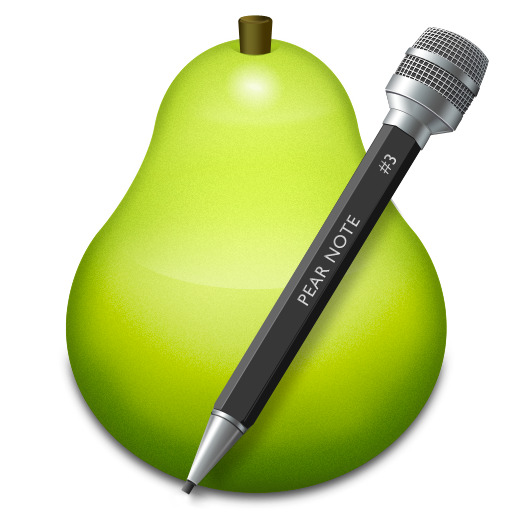

Update: So I uploaded the WAV file to OneDrive which plays it back fine. Only I just have a single external soundblaster card and it was working fine for the last year but now it doesn't export a mixdown anymore. I'm sure it's something really over complicated that I'll need to understand including lots of abbreviations and assumptions that I have 9 thousand phono leads plugged into far too many third-party devices. Outside of StudioONE though, neither a wav or an mp3 will play back. The wave is there and if I import it straight into the song it plays.
PEAR NOTE EXPORT MP3 WINDOWS
All been working fine and now neither Windows nor Audacity will play the WAV or MP3 file back. Before I opened it, I tried the mix down and it played.
PEAR NOTE EXPORT MP3 UPDATE
I closed studio one to update thinking that might help.

BUT - you have Artist that does not allow external VST's so that should not be the problem. NOTE: Some third party VST's need "realtime processing" checked in the options area.

If that isn't the problem, double check (don't assume anything) the following steps.ġ: Make sure your song is playing properly in Studio One and that you hear it exactly as you want it.Ģ: Make sure your song is in between the START and END markers.Ĥ: Choose your format (for testing, I would recommend WAV 16 Bit / 44.1K since it is simply a CD quality file and very universal)ĥ: Set the Export Range to "Between Song Start/End Marker" Close Studio One and try opening the mixdown file again. If you are trying to mix on the board and use that mixdown (analog summing), then you need to set up a new track in your studio one song, and record the main output of the SL mixer.Ĭodamedia wroteAre you sure the mixdown has no sound? If you try to open the mixdown in another program with Studio one still open, it's possible the audio device is not being shared. However a mixdown within Studio One sums the signal at the main, which is why you need the audio routed there. Where the Studio One main out routes to does not affect the mixdown. The channels themselves need to be routed in the S1 mixer to the main out in Studio One. Can't get any sound exporting using my 24 channel studiolive mixer, which shouldn't matter. I have exported MANY files when I had my 1818 - no problems. Other great apps like Pear Note are Microsoft OneNote, NoteLedge, Zoho Notebook and Quillnote. The best alternative is Google Keep, which is free. You can also see no wave files, just a flat line the length of the song. There are more than 50 alternatives to Pear Note for a variety of platforms, including iPhone, Mac, Windows, iPad and Online / Web-based. You can open the file and hear very slight static. I've selected the options: Within the Loop, Start and end marker, start marker and 2nd marker. I have a 24.4.2 so in the output there is no main out selection, there is only 2Trackln L&R 0 which is the main out channel in studio one v3 pro. So without further ado, let’s head into Audacity to look at the settings available for exporting MP3.4Mag wroteI have the same problem. What this means is that you will have different priorities depending on what your sound mix consists of. With spoken word, you can get away with a much lower bitrate without your listeners noticing any difference. Music has more complex data and is a stereo track, which means it will need a higher bitrate to sound ‘good,’ while a podcast, with just a voice in mono, is not as complex. If you are working with music, you generally need a higher bitrate than spoken word recordings, such as voiceovers or podcasts. You may have the greatest-sounding recording of all time, but if you convert it to a low bitrate, the sound will be poor.Īnd conversely, if you are using a $2 microphone and you record in your bathroom, it will not matter how many bitrates you throw on the MP3 to get a good result. In general, higher bitrates result in higher quality audio. The quantity of data that gets converted into audio is known as bitrate.


 0 kommentar(er)
0 kommentar(er)
